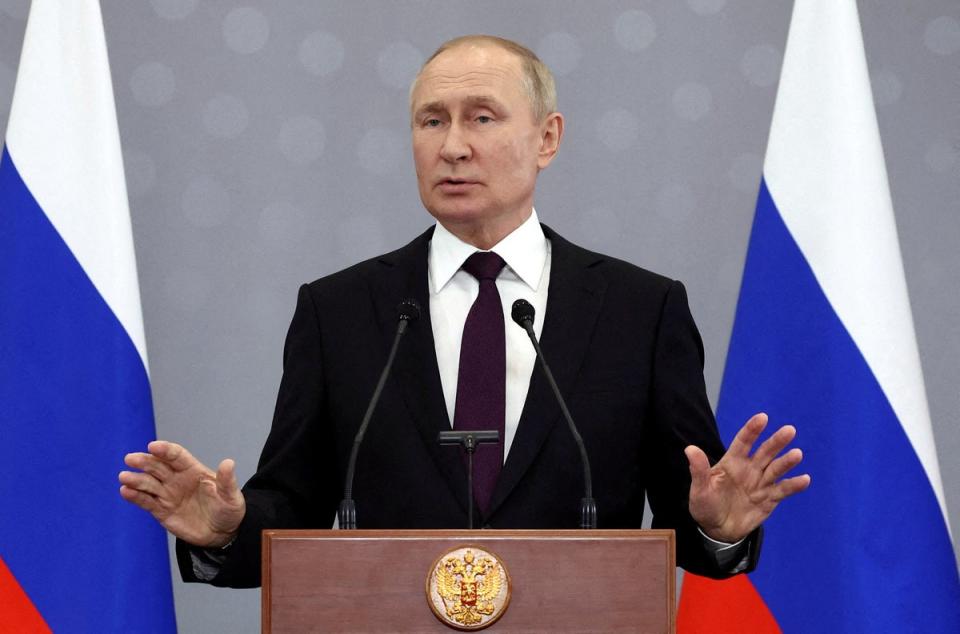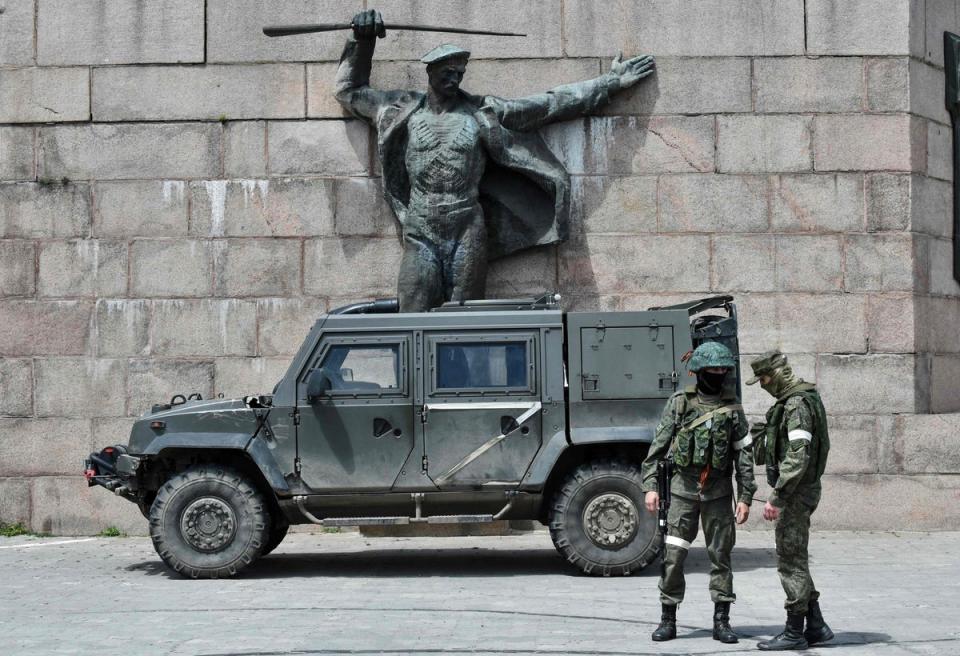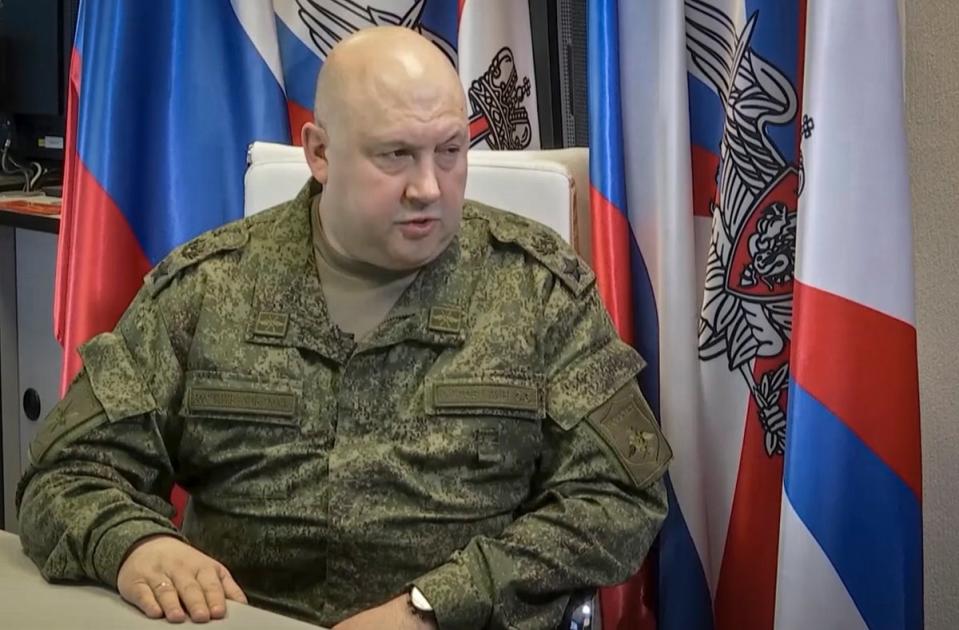Vladimir Putin imposes martial law on annexed regions of Ukraine
- Oops!Something went wrong.Please try again later.
Vladimir Putin said he is imposing martial law on the four regions of Ukraine recently illegally-annexed by Moscow.
The Russian president made the statement during a speech to his Security Council on Wednesday.
The four regions affected will be Donetsk, Luhansk, Kherson, and Zaporizhzhia, none of which though are under full Russian control, and whose annexation has not be recognised by the West.
Putin didn’t immediately spell out the measures that would be taken under the martial law. But Russian legislation envisages that it may involve restrictions on travel and public gatherings and tighter censorship, as well as giving broader powers to law enforcement agencies.
He also announced enhanced powers for governors of all Russian regions.
““In the current situation, I consider it necessary to give additional powers to heads of all Russian regions,” he said.
The announcement comes as a significant Russian gain in one of the affected regions comes under real threat.
Tens of thousands of civilians have been urged to evacuate the Moscow-controlled Kherson “as fast as possible” as Ukrainian forces begin to advance upon the city.
The Russian-installed leader of the annexed Ukrainian region said on Wednesday that authorities plan to evacuate up to 60,000 people over the next six days amid escalating pressure from a Ukrainian counteroffensive.
Speaking on an online broadcast of “Soloviev Live”, Russian-installed governor Vladimir Saldo said authorities were moving civilians to the left bank of the Dnipro in order to “keep people safe” and allow the military to “act resolutely”.
Kirill Stremousov, the Russian-installed deputy head of Kherson told residents in a late night post on Telegram: “I ask you to take my words seriously and take them to mean: the fastest possible evacuation.”

He added: “In the very near future, the battle for Kherson will begin.”
Russian forces in Kherson have been driven back up to 30 km (18 miles) in the last few weeks and are at risk of being pinned against the western bank of the Dnipro River.
“I drove through the regional centre this morning. On the exterior, there was nothing to suggest there was a lot of pressure,” Saldo said.

“But when I arrived at the river port I saw that the boats were waiting and are already loaded with people ready to go to the left bank of the Dnipro,” he said, adding that the situation “is getting tense”.
He said an estimated 10,000 people a day would be moved over the next six days, and that some regions in Russia were being prepared to accept people.

More than 5,000 people have already left Kherson in the last two days, Saldo told state television.
However, one senior Ukrainian official accused Russia of organising a “propaganda show” in the city by urging residents to flee and said they were trying to scare people with fake newsletters about Ukrainian shelling of the city in southern Ukraine.
“Propaganda will not work,” said Andriy Yermak, head of the Ukrainian president’s office.
If Ukraine were to retake it, it would deal a huge new defeat to president Vladimir Putin’s military and test his stated commitment to defend what he claims as Russian lands with all available means including nuclear weapons.
On Tuesday night, the new Russian commander in Ukraine conceded that Moscow’s position in the annexed regions is “tense”.
Referring to Kherson, General Sergei Surovikin told state-owned Rossiya 24: “The situation in this area is difficult. The enemy is deliberately striking infrastructure and residential buildings.”

